La Classificazione del Montefalco Sagrantino DOCG
La Classificazione del Montefalco Sagrantino DOCG
(December 18, 2009)
Sagrantino Inspired by Bordeaux to Show Off its Qualities
The headline of the press release read, “Sagrantino inspired by Bordeaux to show off its qualities”.. Since it was the 30th anniversary of Montefalco Sagrantino receiving its DOC designation, this was a good time to make this announcement.
The wine also has been awarded the DOCG so the consortium was looking for a way to bring more attention to the wine and the area. What better way to do this than to imitate the French!
The Consorzio Tutela Montefalco, with the approval of The Ministry of Forests, Food and Agriculture, established a commission (the makeup has not been decided) to divide the wines into several quality classes, inspired by the model adopted by the Saint-Emilion area in Bordeaux in the mid-nineteen fifties. It will be known as: La Classification del Montefalco Sagrantino DOCG.
A conference on the Experimental Classification of Montefalco Sagrantino DOCG was organized for November 19 and 20 in Montefalco primarily to discuss the pros and cons of the proposed classification.. I was part of a group of journalists both international and Italian who were invited to the conference.
A panel discussion moderated by Daniele Cernilli, Gambero Rosso magazine’s editor included the distinguished Professor Vincent Zampi (Economics Professor of the Florence University). He explained the proposal and elaborated on it.
The other speakers were: Denis Dubourdieu (Oenology Professor at Bordeaux University), Attilio Scienza (Oenology Professor at Milan Univeristy), and French journalist Thierry Desseauve. Riccardo Ricci Curbastro (FederDOC president) and Stefano Raimondi (CE wine and food drink manger) also spoke. It was an interesting discussion and there were very good points made for and against the proposal. We will have to wait until next year to see what happens.
One of the questions that crossed my mind was why Montefalco Sagrantino was chosen as the first wine for this type of classification. The Consortium’s answer was that Sagrantino di Montefalco can be considered a unique laboratory for creating and perfecting a classification system. Of course the Consortium feels that the pros outweigh the cons..They went on to say that the wine is neither well known, nor has it achieved the prestige that it deserves and that the classification may help to achieve these ends. When I asked some of the producers how they felt about the proposed classification, there were mixed reviews.
To understand why the Consortium considers the wine unique and to understand it a little better, here is some information that I learned from my visits to Montefalco.

There are many different explanations on how the Sagrantino grape came to Umbria. Pliny the Elder (d.79 A.D) in his Naturalis Historia writes that a grape called Itrola was cultivated there in Roman times. Some sources state that it might have been brought to
Recent studies show that the Sagrantino variety does not have any similarity to any other grape variety cultivated in
The name can be traced to the Latin “Sacer”, meaning sacred and related to the sacraments, since the grape was cultivated by monks to produce a raisin wine used for religious rites. Sagrantino is first mentioned in a document dated 1549 when a Jewish trader named Guglielmo and his wife Stella placed an order for this grape
.
Montefalco Sagrantino D.O.C.G. must be produced from 100% Sagrantino grapes. In the beginning it was only made into a passito (dried grape) wine. It is an ideal grape for this process because it can dry for as long as four months and can conserve its sugar components intact. By law, this version has to be aged for 30 months and have at least 14% alcohol. The dry version (secco) must also be aged for 30 months (as of this year 36 months) but 12 of the months must be in wooden barrels. The alcohol content must be at least 13%. It was not until the early 1970’s that a dry version was produced.
The Sagrantino grape is very high in polyphenols (substances extracted from the skins of grapes that provide the coloring and texture for the wine) and also tannin which helps red wine to age. We were told by Signore Mattivi from the Instituto Agrario Di San Michele all’Adige that of the 25 most popular grapes tested, Sagrantino was the highest in polyphenols and tannin. I also learned that the structure of tannin is different in the pits and the skins. Even though the Sagrantino grape is so high in tannins because of the nature of the grape, it is possible to have a balanced wine. Phenolics (polyphenols) have powerful antioxidant properties, but I will not go into this discussion!
Sagrantino is a wine with unique characteristics and a number of producers make
excellent wines. They deserve to be better known and I wish them luck with their classification!
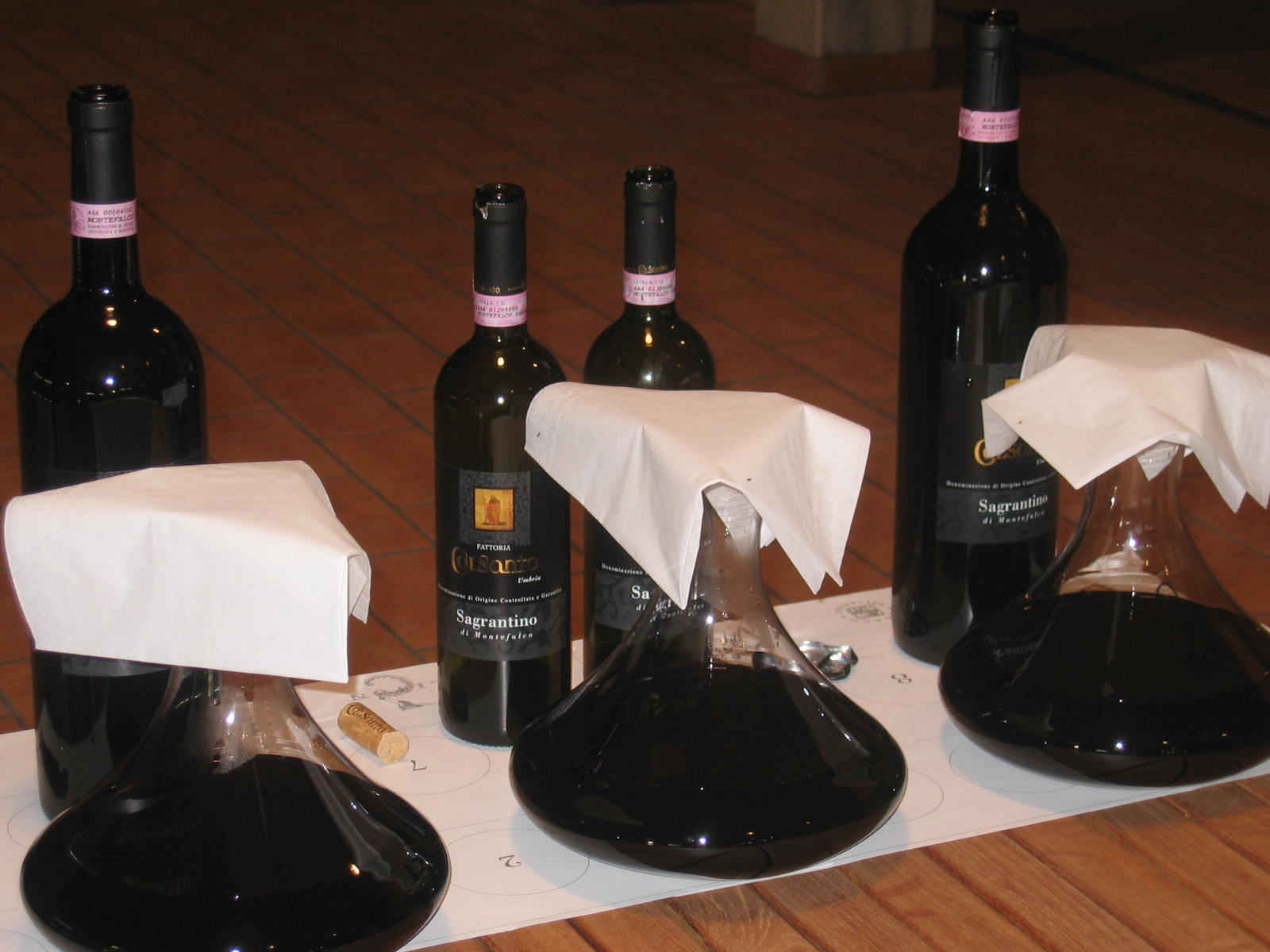
After the conference there was a tasting of Montefalco Rosso DOC, Montefalco Sagrantino DOCG and Passito. 47 producers are members of the Consortium (a few producers are not members) and about half of them were present at the tasting.
.
I was impressed with the Sagrantino 2003 from Cantina Colle Ciocco. The wine was aged in 25hl French oak barrels. It was complex and very intense with aromas of blackberry and black cherry and a great finish and aftertaste. I also like their passito which is aged in 5hl barrels for five months. It was very well balanced and could be drunk with certain foods such as lamb.
The Sagrantino 2005 from Cesarini Satori Signae had hints of blackberry, pepper with a touch of balsamic. Their passito Semel had hints of dried fruit and balsamic overtones with a great finish and aftertaste. It was a true dessert wine.
The Passito 2006 of Colle Del Saraceno- Az. Agraria di Francesco Botti was a big rich wine with flavors and aromas of blackberry, cinnamon and dried fruit-- it was almost like liquor.
I had visited the Perticaia Az. Agraria di Guido Guardigli last year and was very impressed with his wine. I felt the same way after tasting his wines this year; both the Sagrantino and the Passito were impressive.
Colpetrone I also visited last year. They make a more international style Sagrantino.
Tenuta Alzatura is owned by the Cecchi family from Tuscany. The Sagrantino 2005 is aged in barriques for 16 months. There were undertones of blackberry plum and coffee; the wine had a nice finish and aftertaste.
It was very interesting to me that most of the wines showed very well and that you can get a balanced wine from grapes that contain so much tannin. The passito is the most tannic dessert wine that I have ever tasted but it works.
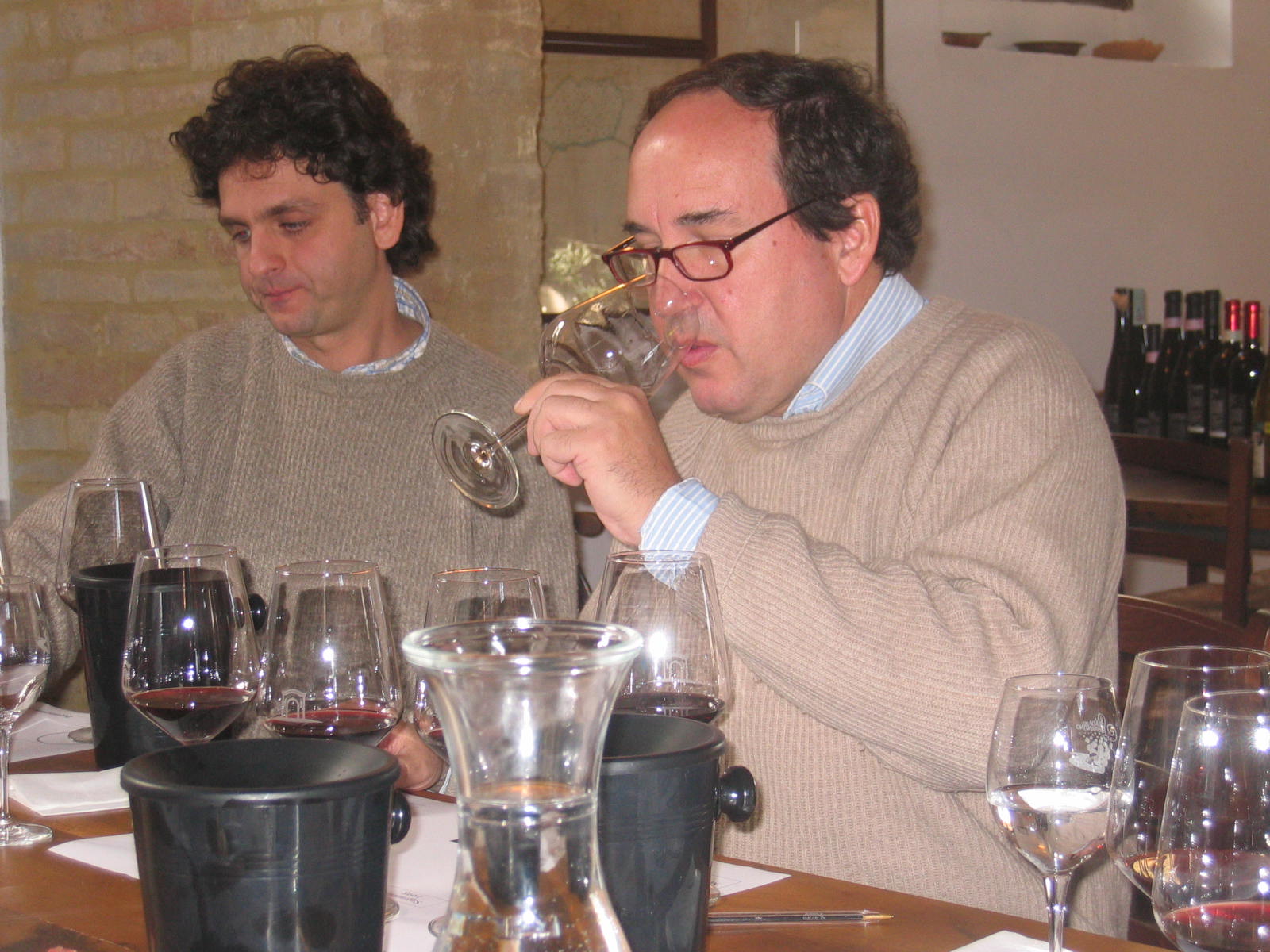
Sagrantino di Montefalco – 100% Sagrantino is aged in 500 liter barrels for six months and 25 hl barrels for 12 months. The 1998 was aged in botti (large oak barrels) and the 1995 & 1985 were aged in cement containers. The barriques and the stainless steel came later. The wines all showed the same blackberry and plum aromas with a hint of mushroom. This was the first time I was able to taste Sagrantino this old. It is one of the most tannic of wines but there was more than enough fruit to carry it. This tasting proved that Sagrantino is a wine that can age.
The 1985 Passito was made from the grapes that receive the most sun. They are placed in crates and dried naturally on cane trellises for 75-90 days. The wine is unfiltered and aged 15 months in 25 hl barrels. It is a big tannic dessert wine with blackberry and raspberry jam aromas and flavors. They also make a single vineyard Sagrantino di Montefalco called “Palone” It was a very impressive tasting.
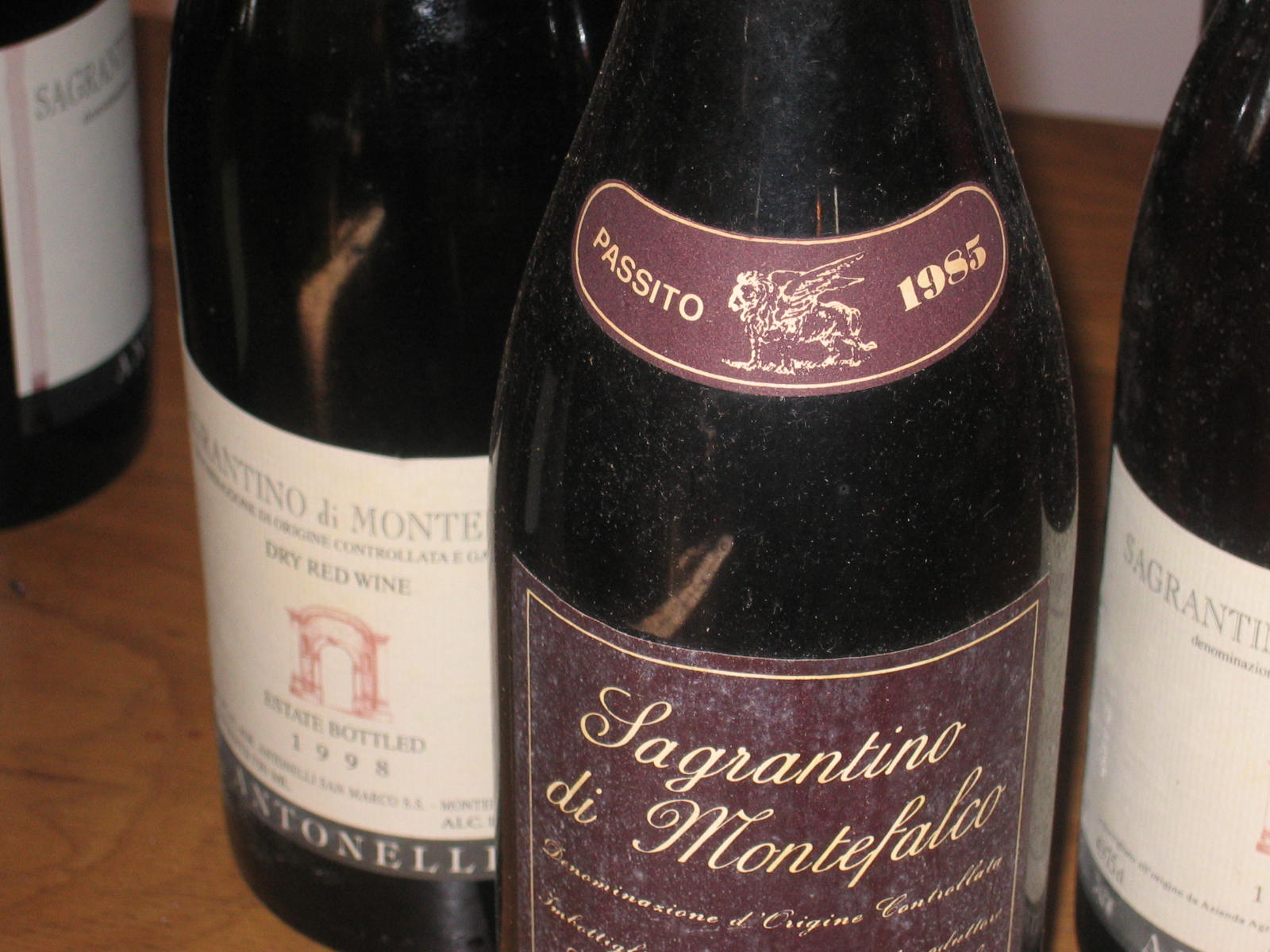
The next winery was Azienda Agricola Adanti (Bevagna) Here we had a tasting of Sagrantino 2005, 2004, 2001, 2000, 1999 1998, 1995, 1994 and 1993. The wine is aged in large oak barrels and they also have a few 500 liter oak barrels. These wines were big and dark with flavors and aromas of blackberry, coffee, tar, smoke and a hint of almonds in the aftertaste. It is a family run operation and the son makes the same style of wine as his father did. These are very long lasting wines.
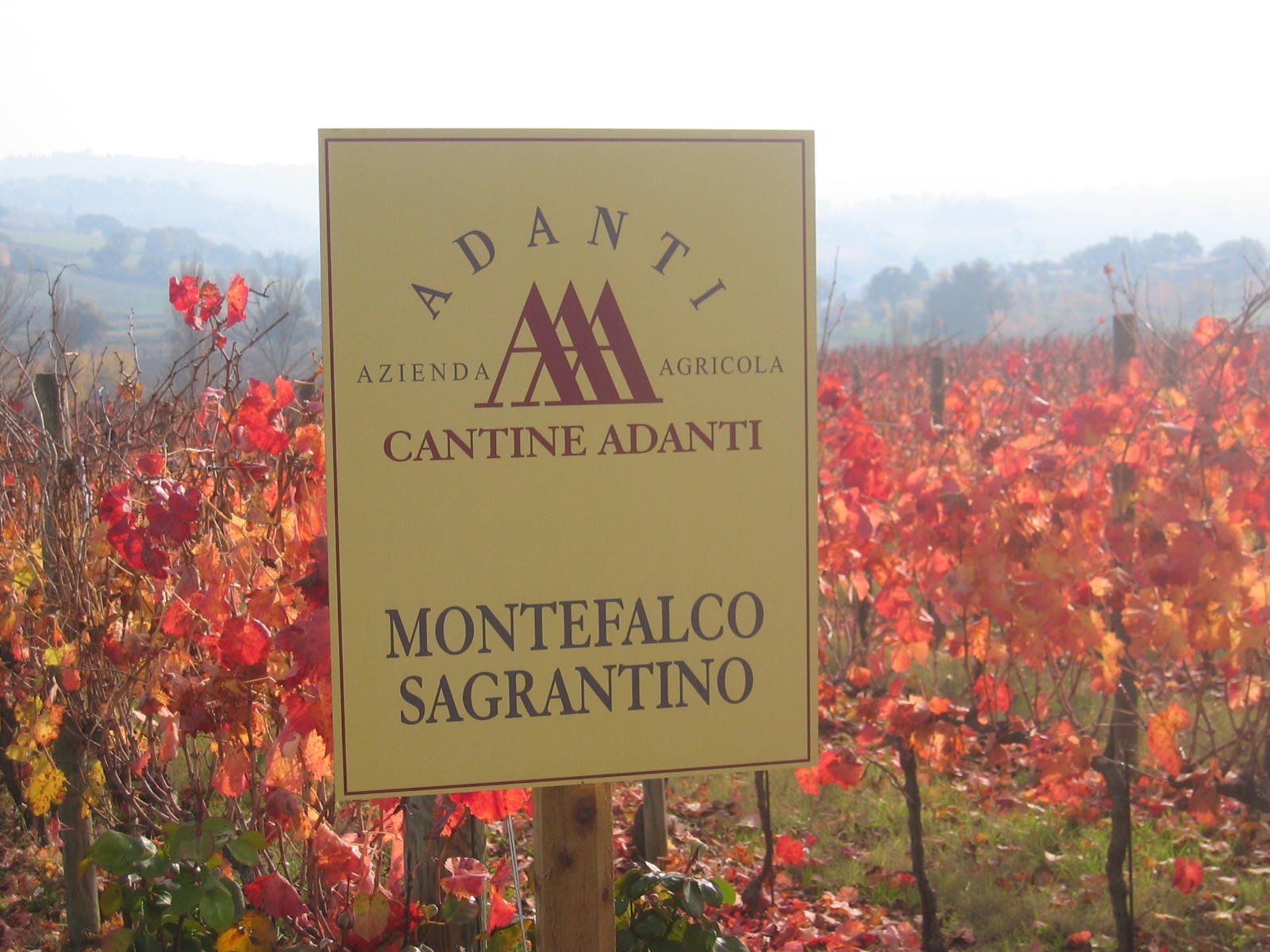
Fattoria Colsanto I first met Valneo Livon in Friuli really liked his white wine. He opened a winery in Bevagna to make Sagrantino. It is a very modern winery and it is only in the past few years that he is using his own grapes to make the wine. His Sagrantino is a touch more modern in style than some of the others but will age very well. Malolatic fermentation takes place partially in barriques 70% and in steel 30% and then the wine is aged 15 months in oak barrels. There are hints of red fruit and spices and undertones of tobacco.
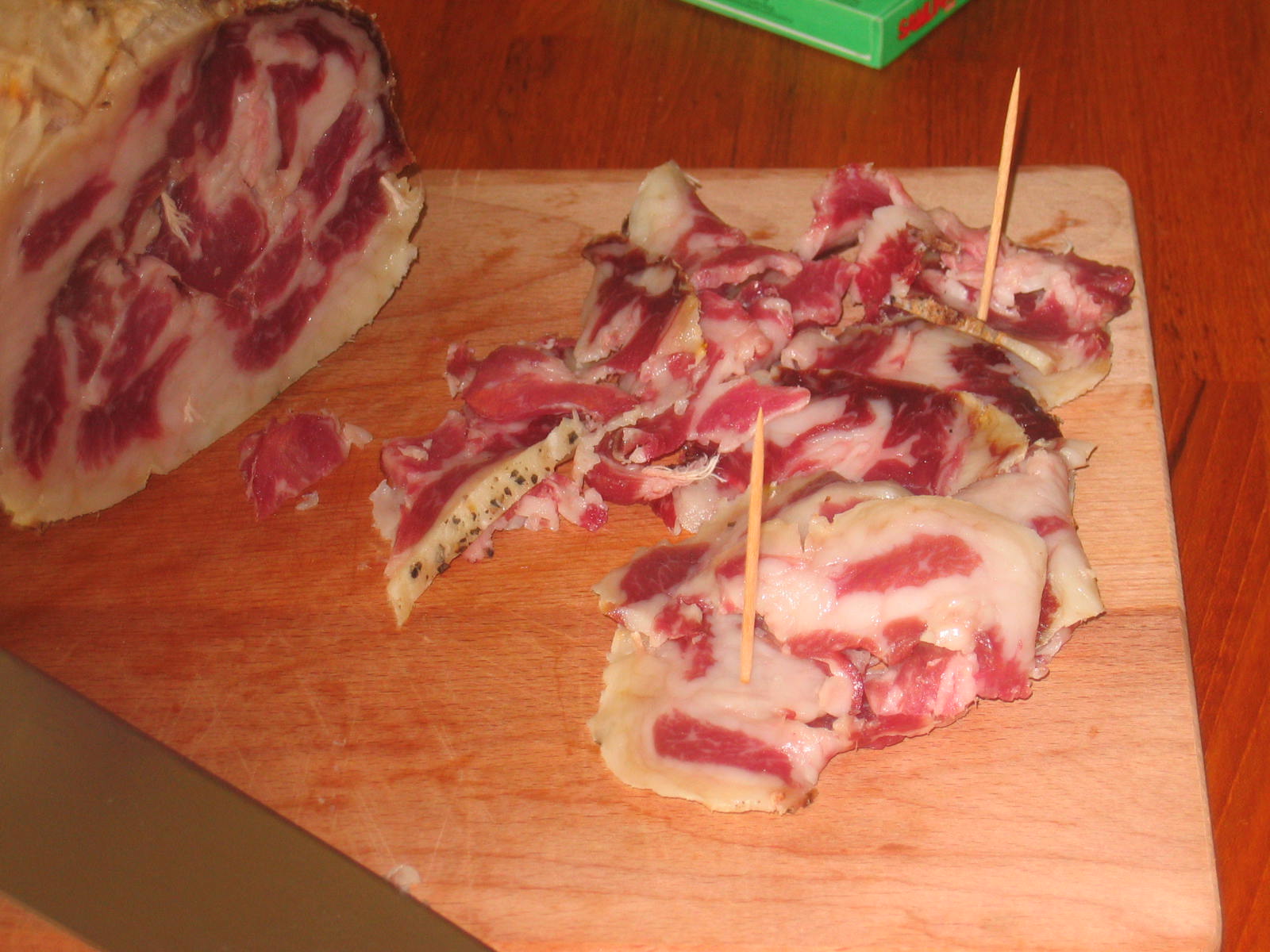
We had a great lunch here that included Coppa.The highlight was the lamb prepared by Valneo’s wife that was the perfect combination with the Sagrantino. It is traditional in the Montefalco area to eat lamb with passito at Easter time. This tradition started many years ago before Sagrantino became a dry wine and many still follow it today.
The fourth winery of the day was Azienda Agricola Doinigi (Bevagna) and it was very cold in the cellar as we tasted the wine .We tasted Sagrantino from 2001, 2002, 2003, 2004, 2005, 2006, 2007 and from barrel 2008. These were very big wines that will last a long time and are aged in a combination of large and smaller oak barrels (used). The skins are in contact with the juice for 20 days. The 2006 tasted very different from the others. When I asked why they explained that some changes had been made in the vineyard and in the cellar. They changed over to botti--large oak barrels and the wood was new! I was very impressed with the 2001 Sagrantino and believe it will last a very long time. The passito 2005 was a true dessert wine aged in botti.
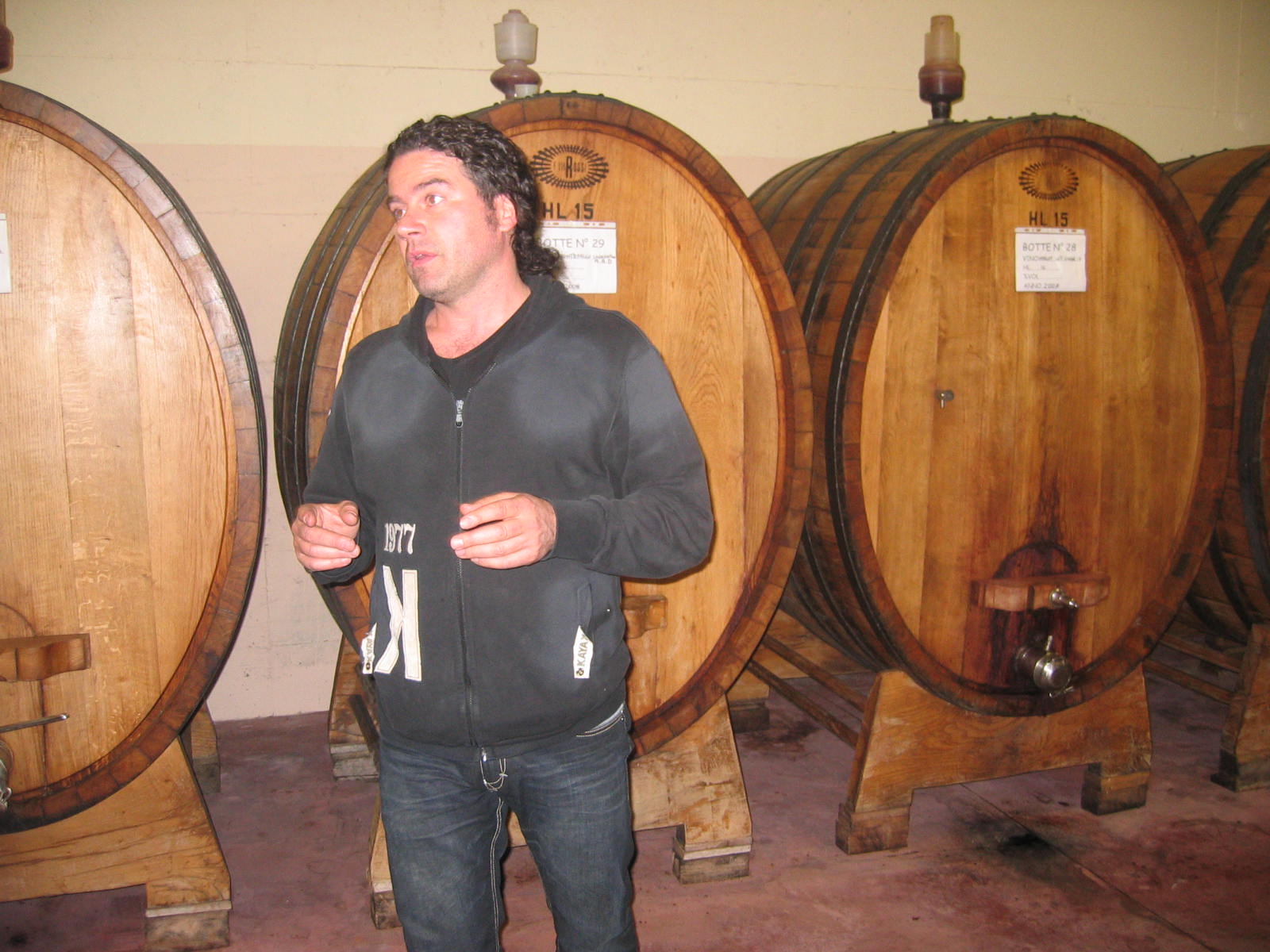
The last winery of the day was Di Filippo (Cannara). The vineyards of the winery are organically certified by the rules of the European Community – vini Umbri da agricoltura biologica. When I asked the owner Roberto Di Filippo about this he said that it was only for the vineyards and that the European Community did not have any rules once the grapes were in the winery. This is a family run winery and it was like tasting wine in someone’s home. The Sagrantino was a little on the modern side and not as big as some of the others but the oak really did not interfere with the taste. The wine is aged for two years in oak casks and has red berry flavors and aromas. Like all the wines I have written about, it will age very well.
This was the first time in Montefalco that I was able to taste so many wines from so many producers and from so many different vintages going back to 1985. I was very impressed with the wines. The Sagrantino di Montefalco will last a very long time because it is the most tannic of wines. It also has a enough fruit to go along with the tannin. The passito was very interesting; some of them being true dessert wines while others could go with food. I can only hope that these wines get the recognition they deserve.
I also visited the Lungarotti winey in Montefalco and spent the morning and afternoon in the delightful company of Chiara Lungarotti but this is an article in itself.
This work may not be reproduced, in whole or in part, without prior written permission.
Questo lavoro non può essere riprodotto, in tutto o in parte, senza permesso scritto.



